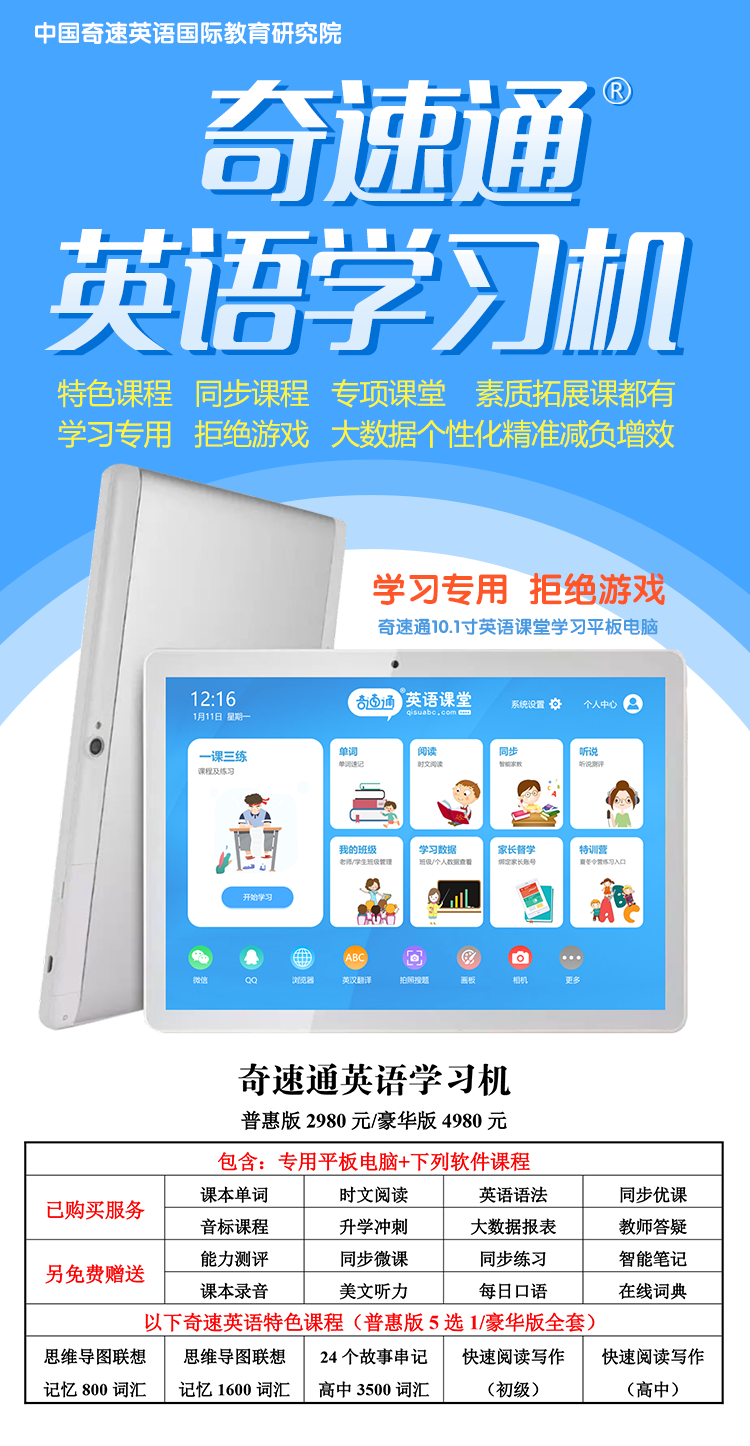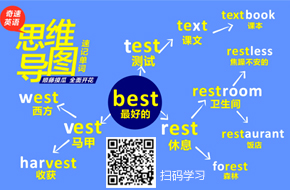1. on
on作介词可以表示
(1)在……之上
Your book is on the desk. 你的书在桌子上。
(2)附近,靠近
He is on my right. 他在我的右边。
(3)在……的时候
I get up late on Sundays. 周日我起得较晚。
(4)关于
He gives us a lecture on how to learn English.
他给我们做了一个关于怎么学习英语的报告。
(5)通过(某种方式)
I study English on radio.
我通过收音机学英语。
注意:in the tree 与 on the tree的区别
in the tree 表示外来的事物,不是树上长出来的。
on the tree是树上长出来的。例如:
The bird is in the tree. 鸟在树上。
There is an apple on the tree. 树上有个苹果。
2. table
table可数名词,“桌子”,其复数形式为tables。常用于以下短语:
at table 在吃饭/ 就餐;
at the table 在桌子旁。
例如:She is at table now. 她现在在吃饭。
辨析:table 和 desk
两者都有“桌子”之意,其区别如下:
desk指“书桌、课桌、办公桌”,常指读书、写字、办公等用的桌子;通常带有抽屉(drawer)。例如:
There is a desk in his office.
他的办公室里有一张桌子。
table指“饭桌、圆桌”,常指供吃饭、喝茶游戏等用的桌子,通常不带抽屉。例如:
a kitchen table 一张餐桌
3. room
room可数名词,“房间”,对应的复数是“rooms”。例如:
There are 180 rooms in this hotel. 这个酒店有180个房间。
room还可以做不可数名词,意为“空间,位置”。例如:
There is no room in the room.
房间里已经没有空间了。
4. bed
bed 可数名词,“床”;其复数形式为beds。常用于以下短语中:on the bed 在床上, in bed卧床(睡觉)。例如:
My book is on the bed. 我的书在床上。
She is ill in bed. 她卧病在床。
拓展:与bed相关的常见短语
go to bed 去睡觉
lie in bed 躺在床上
make the / one’s bed 整理床铺
5. know
know动词,“知道、了解、认识”;其后常接名词、代词或者句子作宾语,也可以承接上文,省略宾语,其同音词为no。例如:
I know his name. 我知道他的名字。
Do you know her? 你认识她吗?
6. clock
辨析:watch 和clock
watch作名词时,指戴在手腕上的手表,挂在胸前的怀表或者用来计时的秒表。
clock 指生活中用的钟表、挂钟、闹钟等,多用来指报时或闹响的钟。闹钟是“alarm clock”。例如:
There is a clock on the wall. 墙上有个钟。
I have a beautiful watch. 我有一个漂亮的手表。
7. but
but是连词,意为“但是”,和and, or等一样,可以用来连接两个并列句。but连接两个并列句时,表示前后意义的转折;此时,but的前面要有逗号。例如:
I like English, but he doesn’t.
我喜欢英语,但是他不喜欢。
8. come on
come on 意为“快点”,是come组成的常用词组之一,在口语中使用很广泛,有很多不同的意思。以下是常见的用法:
(1)表示请求、鼓励、劝说等。例如:
Come on,Lucy,don’t be so shy. 来吧,露茜,别不好意思。
(2)表示催促。例如:
Come on, it’s getting dark. 快点,天要黑了。
(3)体育竞赛时鼓励队员,意为“加油”。例如:
“Come on!Come on!” shouted the audience again and again.
“加油!加油!”观众一再地喊。













